The United States is home to some of the busiest and largest airports in the world, each serving millions of passengers annually. These airports are not just transportation hubs but also economic engines supporting tourism, commerce, and international travel. This article explores the largest airports in the U.S. by both passenger traffic and area, giving you an in-depth look at how these airports function and what makes them stand out in the world of aviation.
13. Washington Dulles International Airport (IAD)
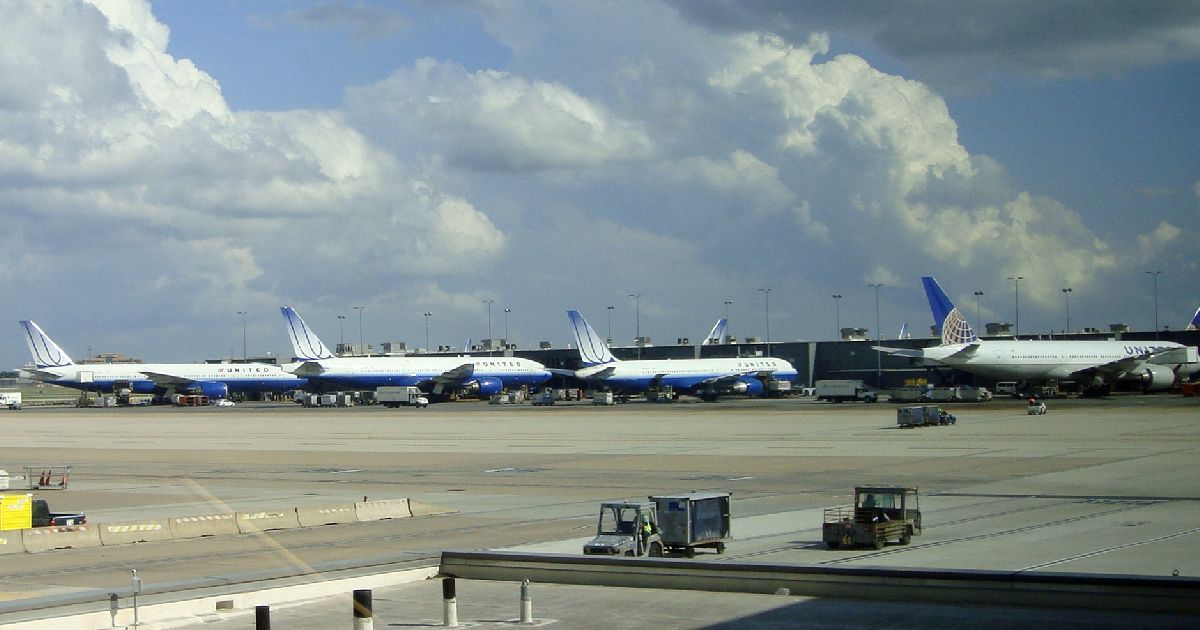
- Passenger Traffic: 24 million passengers annually
- Area: 13,000 acres
- Key Features: Large international terminal, iconic architecture, hub for United Airlines
Washington, D.C.’s international gateway is Washington Dulles International Airport (IAD). European, Middle Eastern and global tourists access IAD’s 13,000-acre international terminal, which carries twenty-four million commuters annually. Contemporary facilities guarantee hundreds of thousands of guests’ soft airport experience.
The U.S. capital’s principal hub for United Airlines, IAD, binds customers globally. Certain of the nation’s finest airports have unique construction and sophisticated amenities. Its ideal location provides quick entry to foreign and domestic destinations.
12. Dallas/Fort Worth International Airport (DFW)
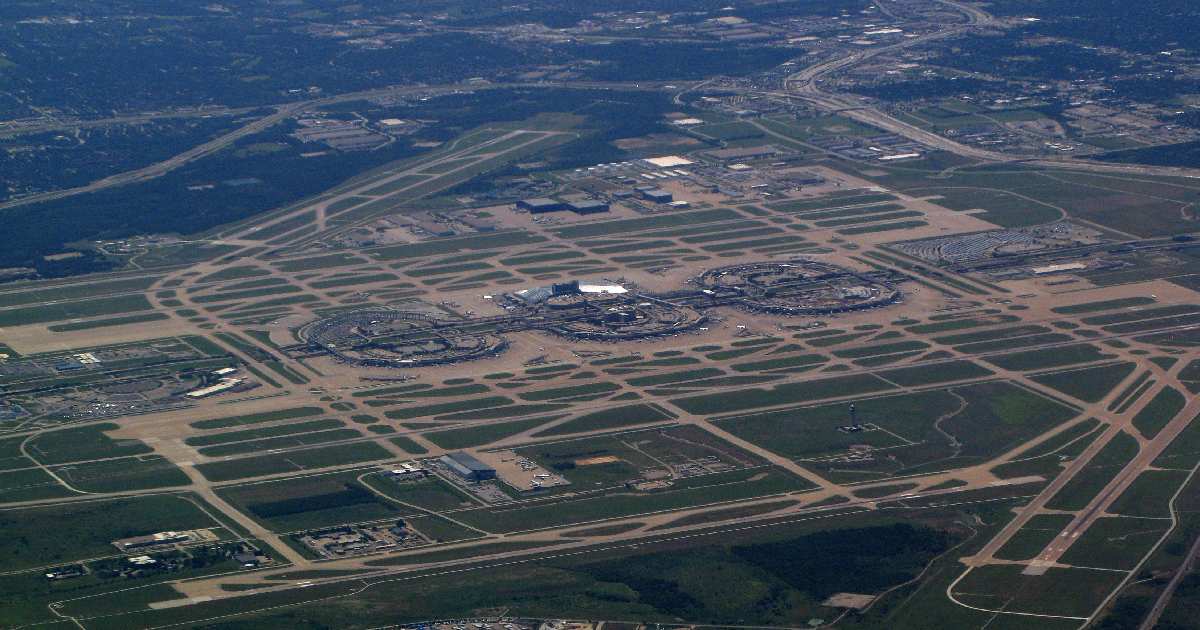
- Passenger Traffic: 75 million passengers annually
- Area: 17,207 acres
- Key Features: One of the largest by area, major American Airlines hub, extensive international routes
The 17,207-acre Dallas/Fort Worth International Airport (DFW) accommodates over 75 million guests annually. American Airlines DFW station provides multiple regional and global flights. Its dimensions and passenger capacity make it crucial to the entire country’s air transportation network.
Numerous terminals and the runway’s size render it an important hub for U.S.-Latin America, Europe, and Asia flights. Texas’ strategic location ensures DFW’s diversification and worldwide air travel prominence. The airport’s efficient structure and substantial daily flight volume define it as an integral international gateway.
11. Detroit Metropolitan Airport (DTW)
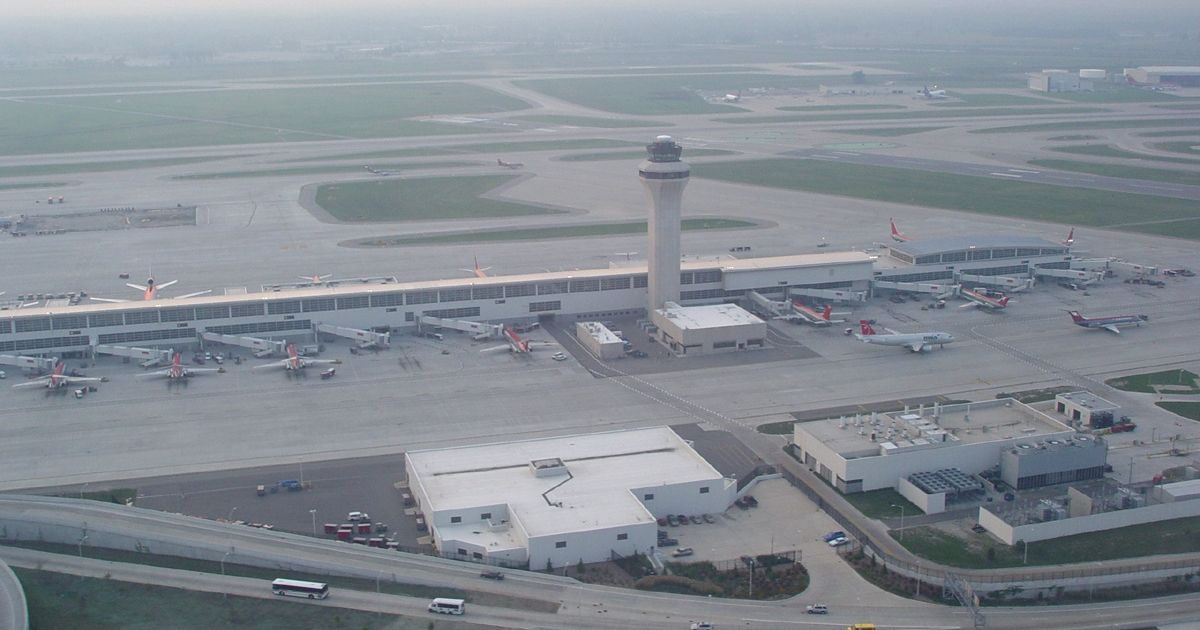
- Passenger Traffic: 35 million passengers annually
- Area: 4,850 acres
- Key Features: Hub for Delta Air Lines, modern international terminal, extensive domestic and international connections
Detroit Metropolitan Airport (DTW) manages thirty-five million tourists on 4,850 acres. DTW is a Delta Air Lines hub with multiple international and domestic relations. Its contemporary terminals optimize transit, making it one of the Midwest’s top-performing transportation hubs.
DTW’s international terminal reaches Europe, Asia, and the Middle East, whereas its Michigan facility binds vital U.S. cities. With its complex facilities and customer-driven amenities, DTW plays an essential role in U.S. aircraft. For prospects traveling between flights domestically and internationally, the runway’s architecture and means of travel are generally easy.
10. George Bush Intercontinental Airport (IAH)

- Passenger Traffic: 45 million passengers annually
- Area: 10,000 acres
- Key Features: Major hub for United Airlines, five terminals, extensive international connections
Houston’s George Bush Intercontinental Airport (IAH) covers ten thousand acres and has 45 million travelers annually. It is one of the busiest airports in the nation for flying to Latin America, Europe, and Asia. IAH features five runways and numerous foreign routes. It is an integral United hub.
Both business and leisure passengers need IAH’s modern comforts and convenient services. Its location in one of the nation’s principal cities keeps it at the forefront of both national and foreign aircraft. As United Airlines’ hub, it reinforces its authority as a regional gateway.
9. Miami International Airport (MIA)
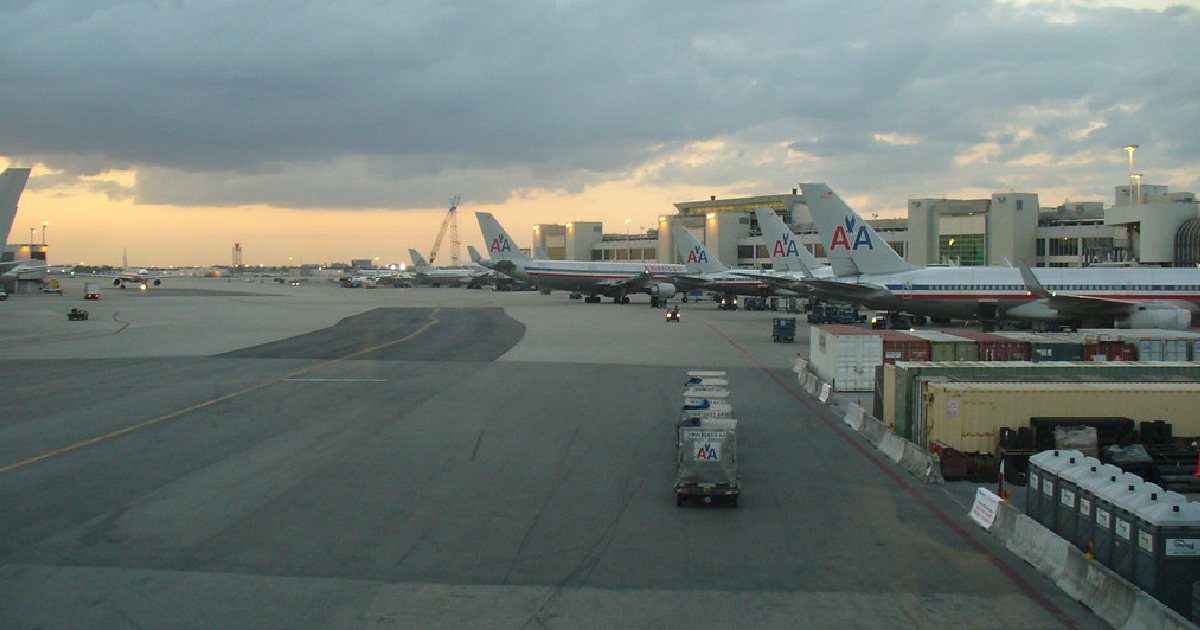
- Passenger Traffic: 45 million passengers annually
- Area: 3,230 acres
- Key Features: Gateway to Latin America, hub for American Airlines, extensive international terminal
Another prominent U.S. international airport is Miami International Airport (MIA), which accommodates more than forty-five million travelers annually. On its 3,230 acres, large international terminal goods and services airlines to regions of Latin America, the Caribbean, and Europe. American Airlines’ primary hub is MIA.
South Florida’s MIA is a prominent business-related and traveler hub that brings millions of citizens across the Americas. One of the busiest U.S. airports, it boasts a broad global flight network and outstanding services. Its liaison with Latin America fosters its international air travel clout.
8. Charlotte Douglas International Airport (CLT)
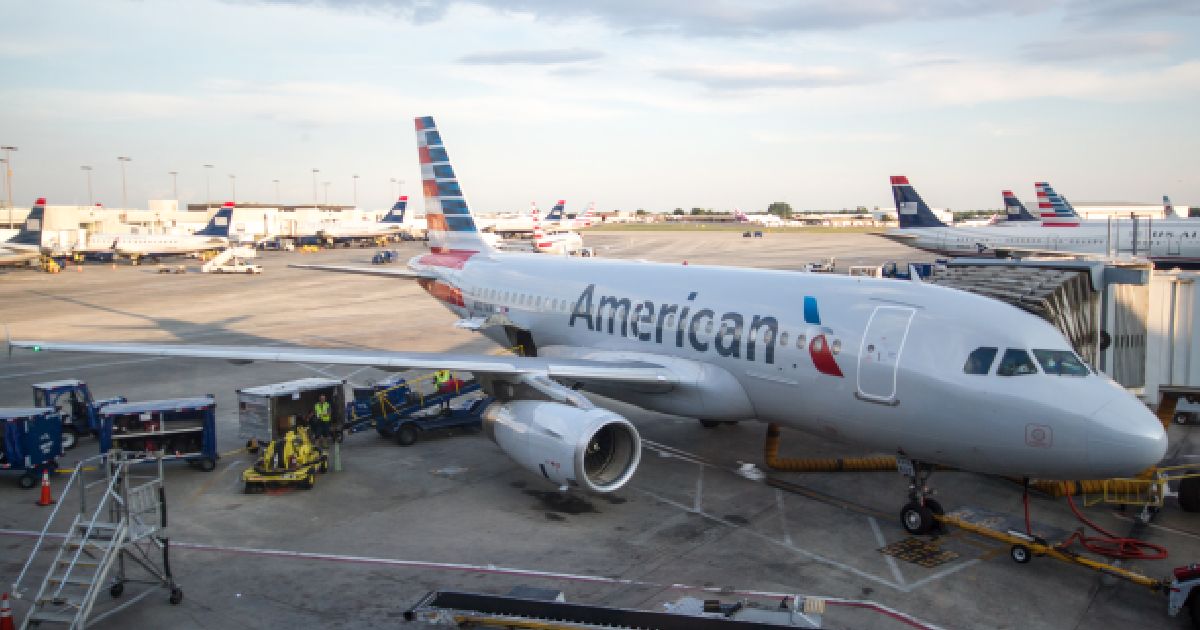
- Passenger Traffic: 46 million passengers annually
- Area: 5,558 acres
- Key Features: Major American Airlines hub, extensive domestic connections, growing international routes
Over 46 million Travellers travel through Charlotte Douglas International Airport (CLT), a rapidly increasing North Carolina runway. CLT is an American Airways hub with 5,558 acres and has noteworthy metropolitan and global connections. Its practical layout and expanding amenities establish it as a Southeast flight hub.
CLT upgrades its terminals to accommodate more travelers and flights, mostly on global routes. Business and leisure Travellers prefer CLT for its advantageous location and relationships to major U.S. cities. Travelers profit as well from the airport’s many amenities.
7. Los Angeles International Airport (LAX)
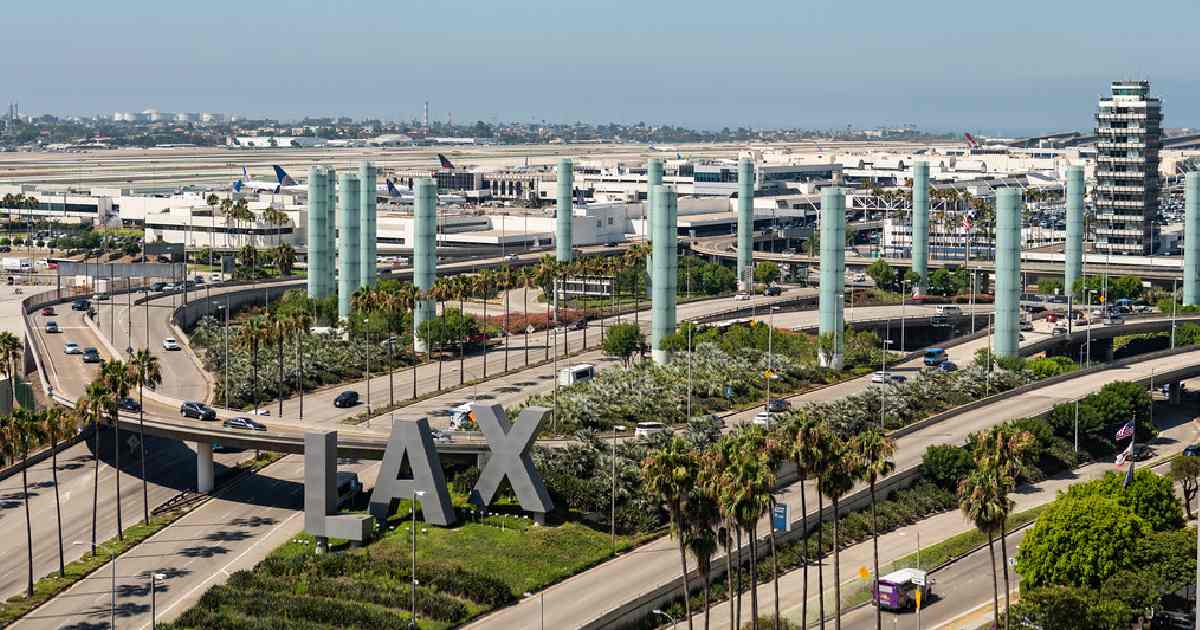
- Passenger Traffic: 88 million passengers annually
- Area: 3,500 acres
- Key Features: Major West Coast gateway, extensive international terminal, hub for multiple airlines
Los Angeles International Airport (LAX) is one of the busiest in the U.S., carrying over 88 million tourists. In its 3,500-acre location, nine airplane terminals, including the huge Tom Bradley International Terminal, serve Asia, Australia, Europe, and Latin America. The airport’s Southern California setting provides it with an integral international and domestic hub.
LAX is a hub for Delta Air Lines and American Airlines, integrating the U.S. into around-the-globe areas. Los Angeles International Airport (LAX) accommodates both business and personal attendance through numerous flights, both locally and internationally. The airport’s sleek facilities enrich hundreds of millions of passengers’ getaways.
6. Chicago’s O’Hare International Airport (ORD)

- Passenger Traffic: 83 million passengers annually
- Area: 7,627 acres
- Key Features: Major international hub, multiple terminals, United and American Airlines hub
Approximately eighty-three million individuals traverse Chicago O’Hare International Airport (ORD), one of the nation’s busiest. O’Hare’s 7,627-acre terminal complex accelerates travel both nationally and internationally. The airport’s location is a hub for United and American Airlines.
Northern, European, Asian, and Latin American routes can be reached by ORD. Flights pairing the East and West Coasts utilize its geographic center. As numbers of travelers grow, O’Hare is expanding and improving its arrival and departure areas to keep its spot as one of the world’s busiest airports.
5. San Francisco International Airport (SFO)
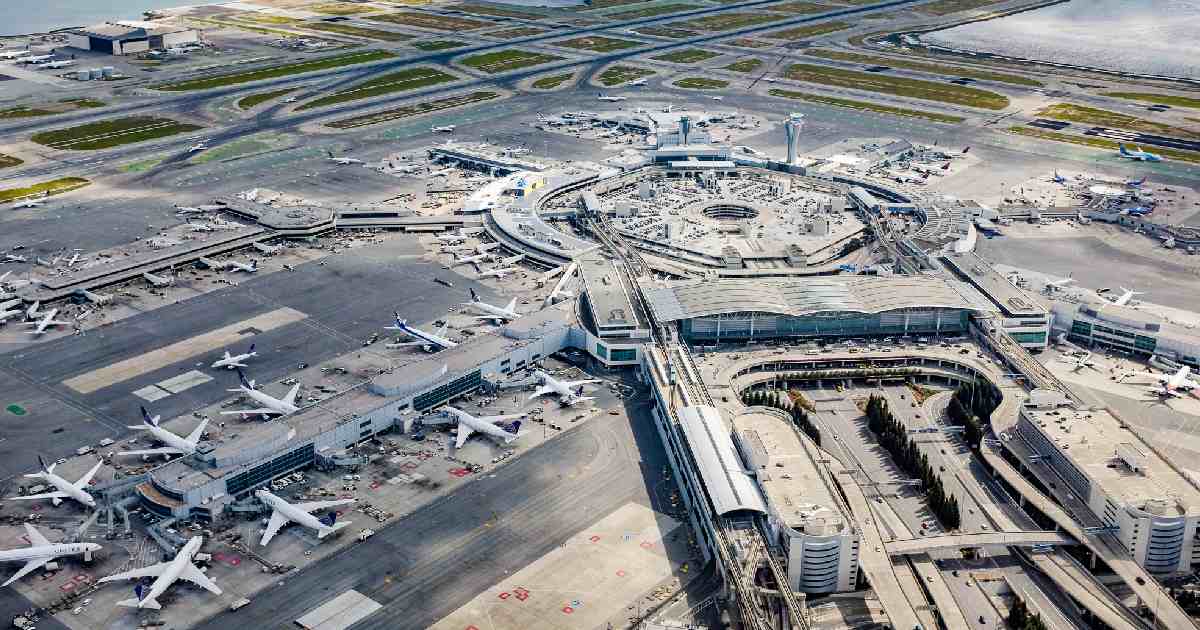
- Passenger Traffic: 58 million passengers annually
- Area: 5,207 acres
- Key Features: Iconic international terminal, sustainability efforts, a hub for United Airlines
Over fifty-eight million travelers pass through San Francisco International Airport (SFO), one of the West Coast’s busiest airports. Travelers to Asia, Europe, and Oceania use its sophisticated, economical intercontinental terminal. At 5,207 acres, SFO has plenty of room for duties and incorporates long-term viability.
United Airlines’ hub at SFO functions multiple states worldwide and domestic amenities. Sustainable development activities involving energy-saving airports and rubbish reduction schemes have generated a trend for other aviation facilities worldwide. SFO’s sustainable commitment boosts its the aviation industry expertise.
4. John F. Kennedy International Airport (JFK)
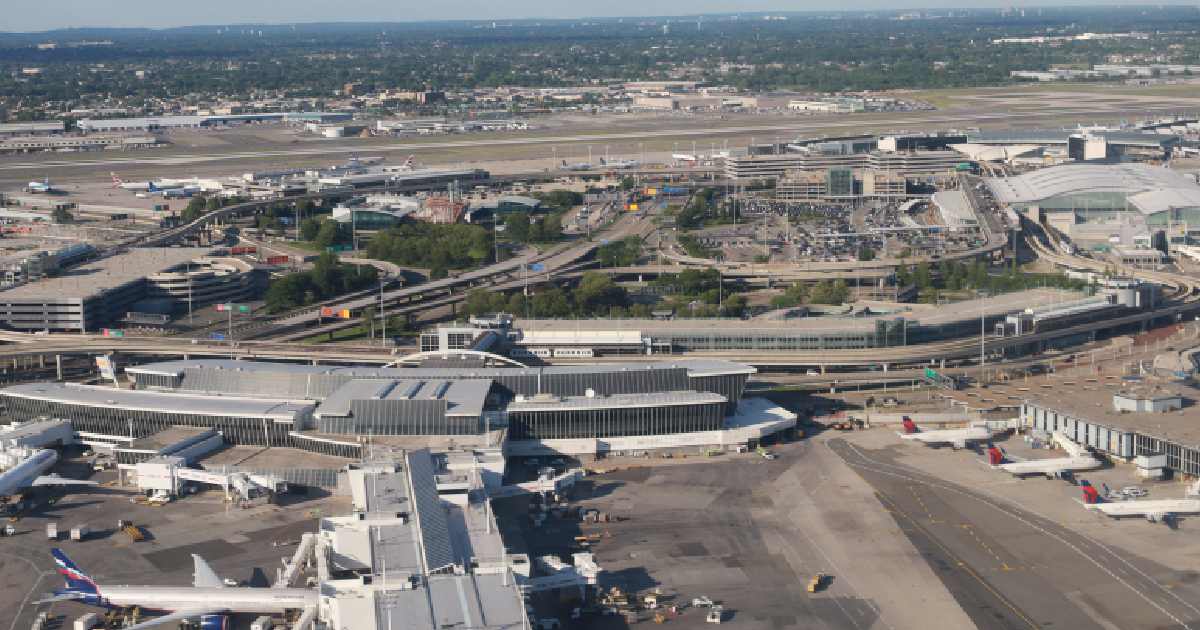
- Passenger Traffic: 61 million passengers annually
- Area: 4,930 acres
- Key Features: Major international gateway, extensive international terminal, hub for Delta Air Lines
NYC’s busiest airport, John F. Kennedy International Airport (JFK), admits foreign travelers. JFK hosts nearly 61 million passengers annually as a hub for routes to Europe, Asia, the Middle East, and further afield. The country’s largest international terminal hosts countless Atlantic tourists.
Delta Air Lines and American Airlines have notable regional and worldwide interactions at JFK. Geographically situated near New York, it constitutes one of the most essential U.S. airports for commercial and leisure travel. Millions of passengers experience JFK’s amenities and facilities throughout the year.
3. Denver International Airport (DEN)
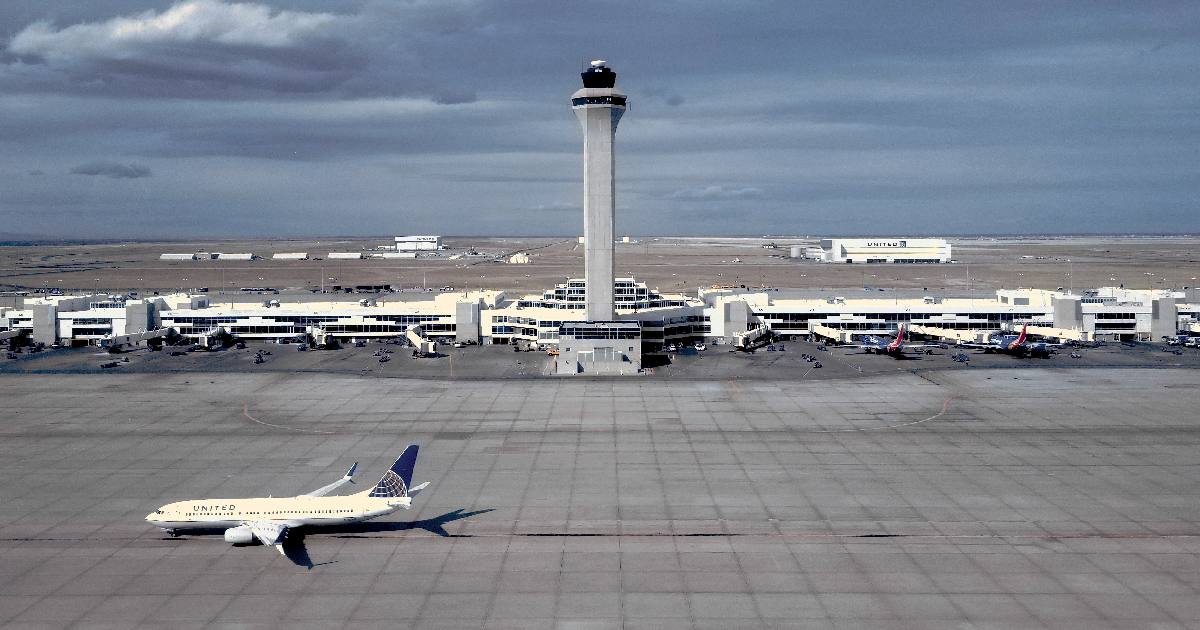
- Passenger Traffic: 69 million passengers annually
- Area: 33,531 acres
- Key Features: the third largest airport in the U.S. by area, high-altitude location, a hub for United Airlines
The most expansive U.S. airport by surface area is Denver International Airport (DEN), with 33,531 acres. The world’s busiest airport, DEN, processes concerning 69 million guests annually. Innovative technology renders DEN an incredibly functional transport hub regardless of its high-altitude spot.
Terminal is a United Airlines hub operating flights to North America, Europe, and Asia. DEN is a modern architectural typical with its tremendous architecture and peculiar domed roof station. Its vast dimensions permit future renovations that meet aerospace demands. Sustainability and ingenuity make DEN an innovative leader in contemporary airport building designs.
2. Orlando International Airport (MCO)
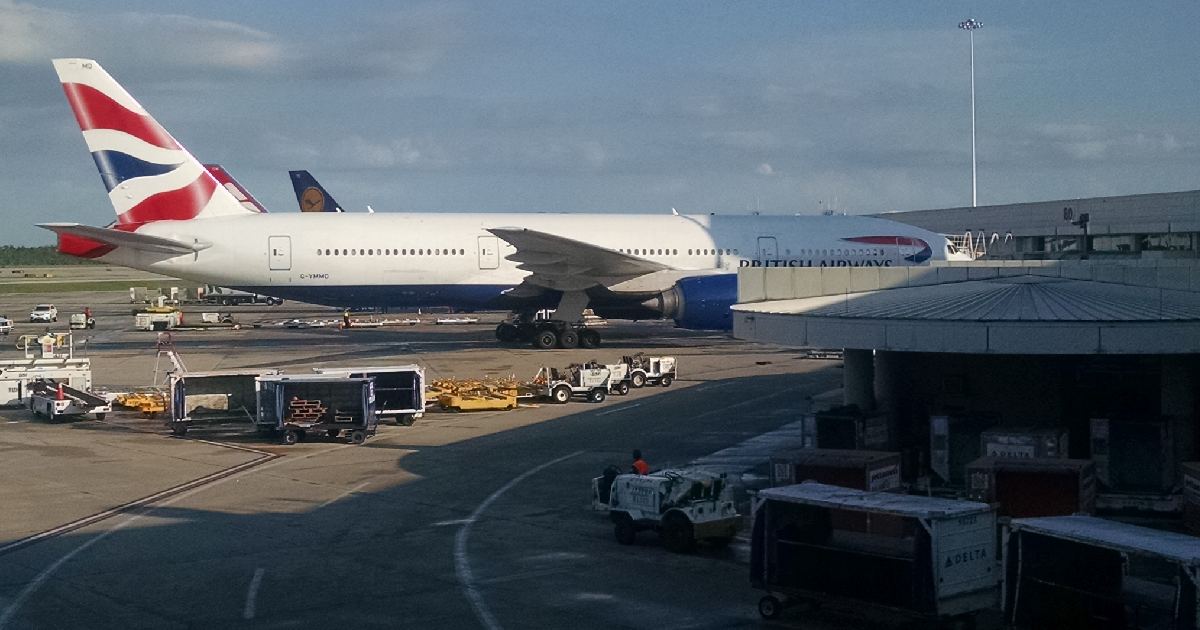
- Passenger Traffic: 50 million passengers annually
- Area: 13,302 acres
- Key Features: Gateway to Florida’s tourism, large international terminal, hub for Southwest Airlines
Orlando International Airport (MCO) is the most significant tourist entryway to Walt Disney World and Universal Studios. One of the nation’s busiest airports, it receives 50 million tourists annually. Its 13,302-acre surface area makes it one of the largest, letting the airfield handle greater numbers of visitors throughout the entire year.
European, Latin American, and various other flights use MCO’s international terminal. This major airport offers a variety of Southwest Airlines national routes. Orlando’s transport demand increases, establishing MCO as an important tourist and corporate hub.
1. Hartsfield-Jackson Atlanta International Airport (ATL)
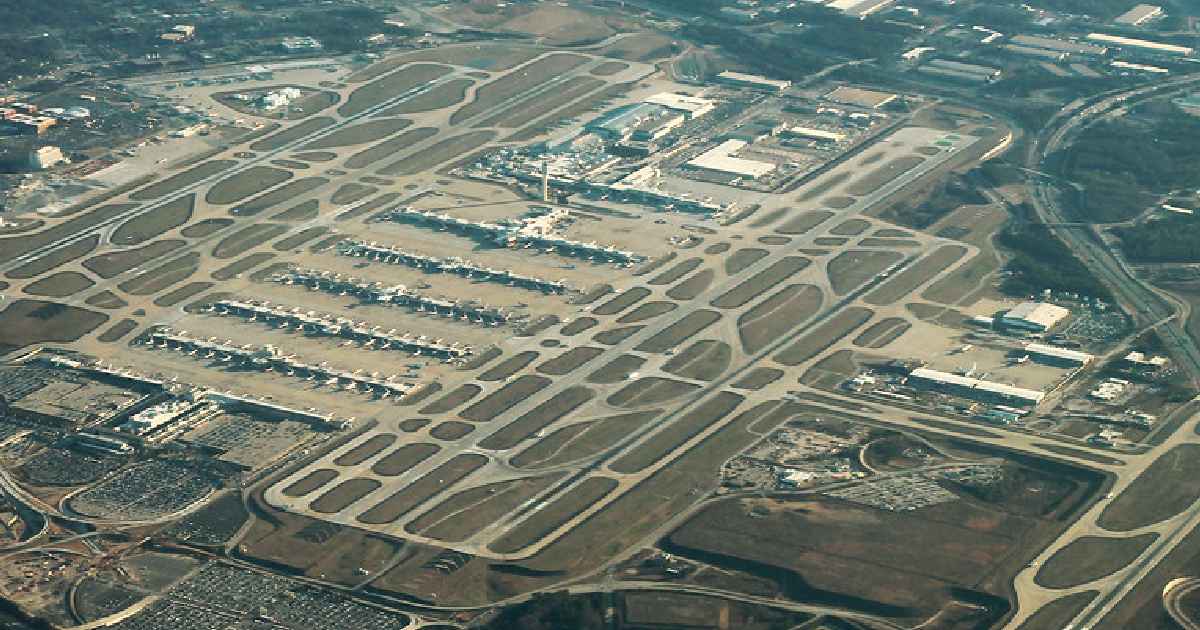
- Passenger Traffic: 107 million passengers annually
- Area: 4,700 acres
- Key Features: World’s busiest airport, major hub for Delta Air Lines, advanced international terminal
Hartsfield-Jackson Atlanta International Airport (ATL) ranks as the world’s busiest airport by passenger traffic. With over 107 million passengers passing through its terminals annually, ATL is a vital hub for both domestic and international travel. Its location in Georgia positions it as a crucial connector for flights across the U.S., Latin America, and beyond.
ATL is also the primary hub for Delta Air Lines, one of the largest airlines in the world. The airport’s international terminal handles flights to over 75 countries, ensuring its importance as a global travel hub. Despite its massive size and high traffic, ATL maintains efficiency through well-designed facilities and continuous innovation.
Conclusion
The largest airports in the U.S. by passenger traffic and area are essential hubs for both domestic and international travel. From the massive expanse of Denver International Airport to the bustling terminals of Chicago O’Hare, these airports connect millions of passengers to destinations across the globe. As air travel grows, these airports will remain vital players in the aviation industry, ensuring that people and goods can move efficiently worldwide.
Frequently Asked Questions (FAQs)
Which US airport has the most traffic?
Hartsfield-Jackson Atlanta International Airport (ATL) is the busiest airport in the U.S. and the world. With over 107 million passengers annually, it handles more traffic than any other U.S. airport. ATL is a major domestic and international travel hub, particularly for Delta Air Lines.
What is the largest airport in the US by passengers?
Hartsfield-Jackson Atlanta International Airport (ATL) is the largest U.S. airport by passenger traffic, handling more than 107 million passengers annually. Its central location and status as a hub for Delta Air Lines contribute to its high volume, making it the busiest airport in the world regarding passengers.
Which airport has the most passenger traffic?
Hartsfield-Jackson Atlanta International Airport (ATL) leads in passenger traffic, with over 107 million passengers annually. Its vast network of domestic and international flights and its strategic location ensure its ranking as the busiest airport globally.
Which airport in the US has the most international flights?
John F. Kennedy International Airport (JFK) in New York handles the most international flights in the U.S. With an extensive international terminal, JFK connects passengers to Europe, Asia, and beyond, serving as a crucial hub for international travel, especially for Delta and American Airlines.
Where is the most traffic in the US?
The Hartsfield-Jackson Atlanta International Airport (ATL) has the most air traffic in the U.S., serving over 107 million passengers annually. Its high traffic stems from its position as a key hub for domestic and international travel, especially for Delta Air Lines, facilitating global connections.

